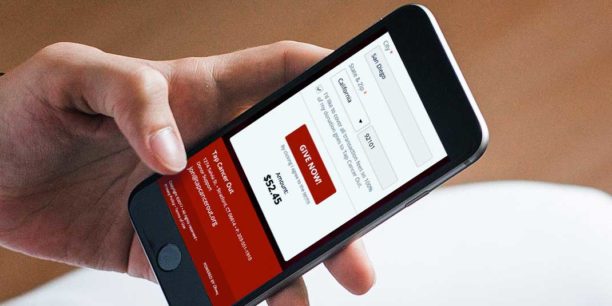How to Run Your Charity Race Series

Strengthen donor connections and amplify your organization’s visibility with a compelling charity race series.
The potential for additional revenue and heightened donor engagement is exciting, but none of that is possible without a plan. How will you make sure every part of the experience results in more eyes on your mission?
Our step-by-step guide to running a charity race series covers everything you need to get started. Discover new ideas for your series, a breakdown of race planning logistics, and technology recommendations to support in-person and virtual participants.
Download the 2022 Event Experience Report
How Does a Charity Race Series Work?
A charity race series is a sequence of individual charity races hosted at various locations throughout a set timeframe. These events encourage broader participation and tend to generate a greater return of donations to fund a specific need.
Race events reach new audiences who might not have discovered your cause otherwise. They’re also more accessible to many supporters than a gala or auction.
Many nonprofits promote their charity race series with an overarching goal. Sub-events within the series can help garner additional revenue as well.
Organizations that master similar models include:
- The American Cancer Society’s Relay for Life Cancer Walk Series
- American Heart Association’s Heart Walk Series
- LOWVELO Ride Series
Benefits of a Race Series
A race series fosters healthy competition and connects people through activity. In the wake of the pandemic, they are also a comfortable way to participate in a fundraising event often in outdoor settings that result in a larger turnout.
In-person components within your race series are going to be largely preferred by attendees, but there are also benefits to bringing in a virtual component. As apps like Future, Apple Fitness, Strava, and Peloton redefine virtual fitness norms, nonprofits can make their events even more accessible and enjoyable for everyone involved.
These at-home exercise solutions allow an avid cyclist to follow the real-time progress of other riders taking a class simultaneously or those who set records taking the same ride in the past. That same cyclist may find the idea of a charity race series compelling to similarly expand their competition and community in a way a local race wouldn’t.
The experience creates a lasting memory that a one-time donation may not. Hook people with a low cost of participation and gain lifelong supporters.
How to Plan a Charity Race Series
Define Your Charity Race Series’ Goals and Objectives
Set Goals and Objectives
- Define your overall fundraising goal for the series and how much each race must raise to get you there
- Determine how many new donors you hope to reach and the registration cost associated with each race
- Break down your budget for each event and identify costs that can be dispersed across the entire series (Think water, race bibs, timing equipment, etc.)
- Pull together any past race event data or use Classy’s fundraising benchmarks to set realistic baseline goals for your series
Select a Target Audience
Every decision and detail of your race experience should revolve around your target audience and individual participant personas.
Start by understanding your audiences’ interests and physical abilities. This data will help you create a safe, inclusive environment for anyone interested in attending. If you’re not exactly sure how your supporters will prefer to participate, market your race series broadly as a “5K Race and Fun Run” or include the word “walk.”
Keep your overarching fundraising goal in mind during this process. Break that number down to donation volume per race and determine how many people you’ll need to engage through peer-to-peer fundraising or additional donation opportunities throughout the series to achieve that goal—even if those people are not participating themselves.
Select an Ideal Timeframe
Schedule your race series for a month or season that falls within your peak donor engagement periods. Consider a relevant timeframe to your cause that generates an organic buzz, like the American Heart Association does with their February walk series to celebrate National Heart Month.
Ask yourself:
- When does fundraising open up in comparison to each race’s live date?
- Can fundraising continue after a race is completed?
- When will fundraising milestone communications go out?
- Is there a mid-fundraising date to plan motivational pushes or celebrations around?
Get Ahead of Key Logistics and Details
Clarify Costs
Here are a few costs you’ll want to discuss ahead of time:
- Timing equipment
- Venue
- Amenities
- Barricades
- Sponsorship packages/performances
- Staffing
Determine Your Day-Of Resources
A mobile check-in process can help reduce friction on race day for both in-person and virtual participants. The Classy Live mobile application makes it simple for volunteers to organize attendee lists and check athletes using just their name, email, or a QR code.
You’ll also need to provide clear race day instructions, bibs or numbers, and a course map if you’re hosting an in-person event. Plan ahead for water stations, healthy snacks, motivational messages, and medals.
A 2021 Boston Marathon runner shares what stands out in a race experience:
Organization and attention to detail are the most important elements in creating a positive race experience. A simple check-in process, hands-on staff, and detailed day-of agenda make a world of difference. When event organizers go the extra mile, people notice and remember that when it comes time for next year’s registration.
Examples of How to Set up a Charity Race Series
You might be wondering how to set up your race series to best support your organization’s goals. Here are some ideas to get you started.
6 Ideas to Set Up Your Charity Race Series
- Races with different distances and difficulties (fun run, 1 mile, 5K, 10K, half marathon, marathon, etc.)
- Races with different participation types (runs, walks, cycling, triathlons)
- Races with different course types (pavement, trail, beach, track, etc.)
- Races with different attendee types (virtual and in-person)
- Races with different sponsors
- Races with the same foundational format, hosted by various organizations, employers, schools, or clubs to put their own spin on it
Create a Strong Format to Achieve Your Goals
Nonprofits have more flexibility than ever to tailor their events based on donor preferences. Most race series take place in-person, but many hybrid options offer a virtual component.
Determine If You Will Include Virtual or In-Person Elements
4 opportunities to incorporate a virtual component :
- Host a 100% virtual race: Stage a virtual racecourse and encourage people to participate at home.
- Open participation to a hybrid audience: Allow people to take part from home or in person at a central location. Keep particular moments, like your opening ceremony or guest performances, online through livestream for everyone to experience together.
- Reserve special events for in-person gatherings: Allow attendees to meet in person for memorable moments on race weekend, like a spaghetti dinner the night before. Invite major donors, recurring donors, or top fundraisers to attend. You could also plan a post-race celebration with drinks, food, and music.
- Host earned-access live races: Keep races smaller to reduce costs and limit participation. Reserve in-person attendance for registrants who hit aggressive fundraising minimums and encourage all other supporters to join from home.
Livestream tip: Determine if you’ll livestream any portion of the race during or after the event for people supporting participants. From there, select the format you’ll use to livestream. Free options include Facebook Live, Youtube Live, Zoom, and Twitch.
Define Your Race Structure
Start by determining how many races you will include in your series. It’s okay to start with just a handful to gauge interest and evolve it year after year.
Consider your audiences’ fitness levels to determine the distance of each race. The most popular are 5Ks, 10Ks, half marathons, and marathons. Of course, you don’t have to choose just one distance per race. Many organizations will consist of options for everyone, with something like a “fun mile” for kids or those who want to take it slow. Offer a variety of distances to choose from to satisfy all participants. This might look like a one-mile run at 7 am, 5k at 7:30 am, 10k at 8:30 am.
Once you’ve determined the distance of each race, consider where you can host them. Something like cycling may require a different terrain than running. Knowing the type of participation will help you decide. Start with locations near your headquarters or local community.
Define Options to Participate and Support the Series
Understand what participation means for each race. Use that to figure out how you’ll include options for people with physical disabilities who want to support the series. Consider allowing participants to fundraise with a peer-to-peer element to boost success.
Peer-to-peer fundraising resources to get started
- Engage corporate partners with multi-layer team fundraising
- Build an effective peer-to-peer strategy with expert advice
- Launch a peer-to-peer campaign on Classy
- See an example of a 5K with peer-to-peer fundraising in action
- Get a complete checklist for your event
Build Your Charity Race Series Campaign
Once you’ve outlined your race series in detail, you’re ready to bring it to life on your campaign page.
Many nonprofits will create a single event page for the series that links to each race. This page brings all ticket purchases and reporting into a central location to efficiently manage the series. You can also turn your race campaigns into a campaign template to recreate along with the series.
Make It Simple to Register
Create a registration page that allows donors to quickly and easily register for the race of their choice or donate to show their support. Select registration questions to gather participant details and provide them multiple payment options. A few popular options include PayPal, Venmo, or ACH bank transfer. Sweeten the deal with a follow-up confirmation, and a “save the date” calendar block.
Incorporate Meaningful Moments of Engagement
Create a welcome video, image, or message that participants will receive after registering. Leading up to the event, send personalized messages and reminders. Include last-minute details, donation progress, and real-time finisher updates as participants cross the finish line.
Offer Multiple Ways to Give
Provide an opportunity to give mid-race when momentum and energy are at their peak. Prompt donations onsite or online through text-to-donate. It helps to keep a live thermometer projected onsite and online for everyone to see the impact they’re making.
Another fundraising tactic is to sell merchandise at your race venue. You can bring that experience online if you’re using a virtual venue with a smooth self-checkout process.
Elevate Your Event With Classy Live
Get Started On Your Charity Race Series
Your race series is in reach. With this guide and a few creative brainstorms, you’re ready to host participants far and wide to achieve a greater impact.
If you’re interested in hosting your series with a virtual component, check out what’s new with Classy Live.
Envision Your Event on Classy Live


